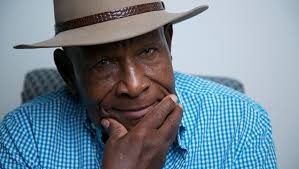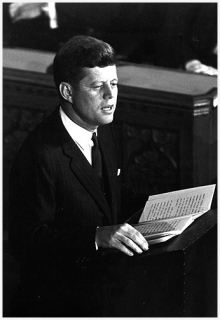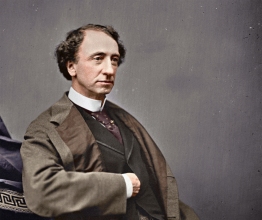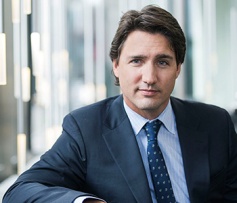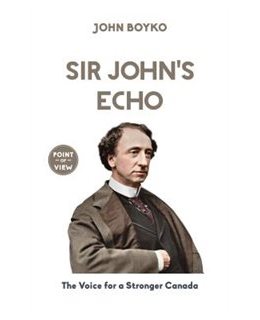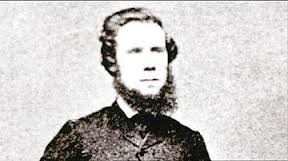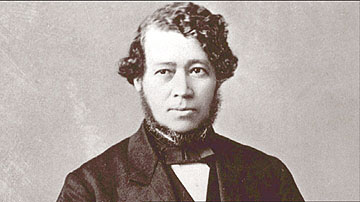Thomas Scott grew up poor. His parents were Protestant Irish tenant farmers so he would have understood the history of Protestants struggling against the power and enmity of Ireland’s Catholic majority and of the famine, disease, and economic hardships that gripped the country during his childhood and teenage years. In 1863, at age 21, the six-foot-two, ruggedly handsome Scott joined the wave of those leaving Ireland. He arrived in Canada West, what is now Ontario, and settled near Belleville. Scott worked as a labourer and joined Sterling’s 49th Hastings Battalion of Rifles. He also joined the powerful anti-Catholic Orange Lodge.
Seeking greater opportunities, Scott travelled west. In the spring of 1869, he arrived by stagecoach in the Red River Settlement, at the junction of the Assiniboine and Red Rivers, at what is now Winnipeg, Manitoba. It was home to about 5,000 descendants of French explorers and fur traders who had wed Indigenous women. Most Métis were Catholic and French-speaking and many were Protestant and English speaking. A growing number of Protestant, English-speaking Canadians, like Scott, were also moving to Red River.

Thomas Scott
The Red River Settlement was part of an expansive region called Rupert’s Land that had been owned by the Hudson Bay Company. In March 1869, just before Scott’s arrival, it had been sold to the British crown with the intent to sell it to the two-year-old Dominion of Canada. The Canadian purchase would not be official until December 1. That nine-month interval created confusion regarding who owned the land and governed its people and added to the resentment among those at Red River that they had not been consulted about the sale. Racial, religious, and ethnic tensions were made worse by the belief that the sale would spark an influx of even more English Protestants from Ontario. The settlement was further split because some people wanted to join Canada, others wanted independence, while others hoped Red River would become a British colony.
Upon his arrival, Scott joined a construction crew building the Dawson Road between Red River and Fort William. In August, it was discovered that the project’s superintendent and paymaster, John A. Snow, had been underpaying the workers. Scott led a gang that dragged Snow to the river and threatened to toss him in. In November, Scott was charged with assault, fined £4, and fired. Scott found work as a labourer and bartender and became known for fighting, drinking, and loudly stating his anti-Catholic, anti- Métis views.
While Scott was working on the Dawson Road, a Canadian survey crew had arrived near the Red River Settlement. They had ignored current land ownership titles and property lines. The Métis quite rightly insisted that until the December 1 ownership transfer, the crew had no official status and were simply trespassers. The Métis spokesperson was a 25-year-old charismatic, fluently bilingual, Louis Riel who had just returned home from Montreal where he had studied to become a priest. Supported by armed men, Riel dramatically placed his foot on the surveying chain and ordered the crew to leave. Its leader, William McDougal, retreated and took his men to nearby Pembina.
The Métis took Upper Fort Garry, the Hudson Bay Company’s post in Red River, and formed a provisional government called the Métis National Committee. Riel was its secretary. On December 1, a frustrated McDougall led his men back to the Red River Settlement but armed Métis, this time acting on behalf of their government, stopped him again.
Meanwhile, the trouble-making Scott had met the 29-year-old doctor and entrepreneur John Christian Shultz. Shultz led the Canadian Party which was a small group of English Protestants who wished to see Red River annexed by Canada and led by English Protestants. In early December, 67 Canadian Party adherents gathered at Shultz’s warehouse in Lower Fort Garry to plan an attack on the Métis government.
A newly constituted provisional government called the Provisional Government of the Métis Nation had been formed with Riel as president. On December 7, Riel had Shultz and his followers arrested and detained. Scott had not been at the warehouse but upon hearing of the arrests he met with Riel and demanded that the prisoners be freed. When the soft-spoken Riel refused, Scott became belligerent, yelled racist insults, and so was arrested. He continued his tirades while under confinement, threatening at one point to shoot Riel.
On January 9, Scott and twelve others escaped. He and fellow prisoner Charles Mair found snowshoes and somehow walked 103 km through a howling blizzard to Portage la Prairie. A month later, still suffering the effects of frostbite, Scott joined Canadian Major Charles Arkoll Boulton and about 60 others who marched through cold and snow, intent on capturing Upper Fort Garry, freeing the prisoners, and overthrowing Riel. They were joined along the way by another 100 men armed with muskets and clubs. Upon their arrival, they learned that Riel had already released the prisoners. While the news led many to turn back, Boulton, Scott, and 45 others continued to insist on Riel’s ouster. Riel had them arrested.
A military council determined that Boulton was guilty of treason and should be executed. After appeals from church leaders and Donald Smith, the commissioner from Prime Minister Sir John A. Macdonald’s government, Riel waived the sentence. The incident, and Riel’s mercy led to even broader support among Red River’s disparate groups for the provisional government.
Meanwhile, the still imprisoned Thomas Scott had become a nuisance. He complained about conditions and constantly shouted violent threats and racist insults at his Métis guards. They chained his feet and hands but he persisted. On February 28, after striking a guard, two other guards dragged Scott outside and began beating him until a member of Riel’s government, who happened to be passing by, intervened. Riel visited Scott and, speaking through a hole in the door, tried to calm the man but Scott merely shouted insults.
Scott’s Execution
On March 3, Scott was brought before a six-man council and charged with insubordination and treason. He was not allowed a lawyer and, because he spoke no French, understood none of the evidence brought against him. Witnesses were not cross-examined. Only at the trial’s conclusion did Riel address Scott in English and summarize what had happened. One member of the council voted for acquittal and another for banishment but four declared Scott guilty and said he should be executed by firing squad.
A minister, a priest, and Donald Smith asked Riel to spare Scott’s life but he refused. Riel believed that the trial and Scott’s execution would demonstrate the legitimate power of his government to the people of Red River and, as he said to Smith, “We must make Canada respect us.”
At one o’clock the next day, March 4, 1870, Scott’s hands were tied behind his back and he was escorted from his cell to the courtyard outside. With Riel watching, Scott knelt in the snow and a white cloth was tied to cover his eyes. He shouted, “This is horrible. This is cold-blooded murder.” Six Métis men raised their muskets but upon hearing the order to fire only three shots rang out. Scott was hit twice and crumpled to the ground but was still alive. François Guillemette, a member of the firing squad, stepped forward, withdrew his revolver, and delivered the coup de grâce, ending Scott’s life.

French-speaking Quebecers had rallied to Riel’s side as a protector of French-Catholic rights. But with Scott’s execution, many in Ontario, spurred by propaganda spread by Dr. Shultz, who had returned to his native province and was supported by the Orange Lodge, demanded that Riel be arrested for Scott’s murder. Prime Minister Macdonald had welcomed representatives from Red River and agreed with nearly all of Riel’s terms; that Manitoba should be created as a province, there be guaranteed protection for Métis land, the Catholic religion, and French language, and that treaties be negotiated with Indigenous nations. The raging controversy around Scott’s death did not change Macdonald’s mind about Manitoba’s creation but to assuage Ontario’s anger he dispatched 1,200 men to Red River, comprised of a British battalion and two Canadian militia battalions. By the time they arrived, Riel had fled to the United States.
Riel’s part in Scott’s execution had destroyed his ability to take a legal, leadership role in Canadian politics. In July 1870, Manitoba became a province largely under the terms he had proposed and the people of the new province elected him as their Member of Parliament three times. However, denounced as Scott’s murderer, Ontario Orangemen had placed a $5,000 bounty on his head and so a fear of arrest or assassination made him unable to take his seat.

Louis Riel
Fifteen years later, Riel returned from his American exile to lead Saskatchewan’s Métis in their fighting for fair treatment by the Canadian government. Riel’s return led Ontario’s Protestant majority to renew their demand that he be arrested for Scott’s murder. The 1885 Northwest Rebellion was crushed, Riel was arrested and charged with high treason. Scott’s execution played a significant part in the jury’s determination of Riel’s guilt, its death sentence, and in Macdonald’s allowing that sentence to be carried out.
Rumours persist over what happened to Scott’s body. Some claim it was thrown into the river and others that it was buried in an unmarked grave or under a building. It has never been found. More importantly, echoes of the gunfire that ended Scott’s life still reverberate through Canada’s culture as bitter and brittle emotions still inform many of our political debates.
This was written for the Canadian Encyclopedia, on line resource that I highly recommend. If you enjoyed the column, please share it with others and consider checking my other work at http://www.johnboyko.com







